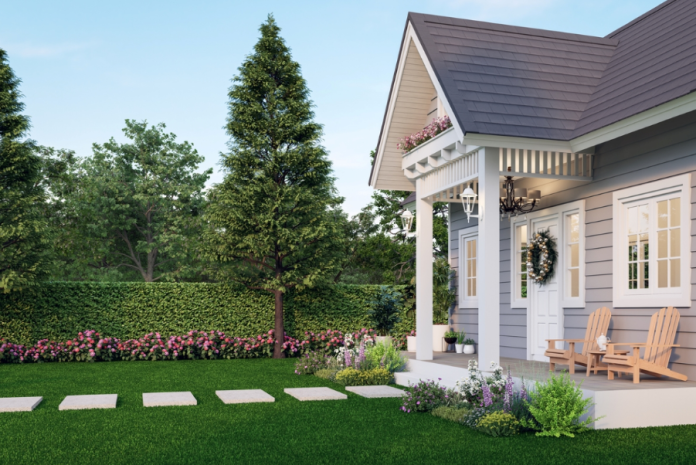Landscaping adds charm and character to your property, but it’s essential to strike a balance between personal taste and neighborhood harmony. While you may adore certain landscaping features, they might not be as well-received by your neighbors. Understanding what landscaping elements could potentially cause irritation to those living nearby can help foster positive relationships and maintain neighborhood harmony.
In this article, we’ll explore 12 landscaping features that might not sit well with your neighbors, offering insights on how to navigate potential conflicts while still expressing your personal style.
- Unruly Hedges: Instead of allowing hedges to grow wild and obstructing the view or encroaching on neighboring properties, opt for regular trimming to maintain a tidy appearance. Consider choosing hedge varieties that stay compact and are easier to manage.
- Overbearing Fences: While fences offer privacy and security, excessively tall or imposing fences can create a sense of confinement and overshadow neighboring properties. Opt for fences that complement the neighborhood aesthetic and adhere to local regulations regarding height and design.
- Excessive Lighting: While outdoor lighting enhances safety and ambiance, overly bright or intrusive lights can disturb neighbors, especially at night. Use lighting strategically, focusing on illuminating pathways and key features while minimizing light pollution beyond your property boundaries.
- Noisy Water Features: Water features such as fountains or waterfalls can add tranquility to your outdoor space, but loud or constant noise from these features may disrupt the peace for your neighbors. Consider installing adjustable pumps or timers to regulate water flow and sound levels.
- Invasive Plant Species: Introducing invasive plant species into your landscaping can lead to unintended consequences, such as spreading to neighboring properties and causing ecological harm. Choose native or non-invasive plants that thrive in your region while respecting the local ecosystem.
- Excessive Paving: While paved areas offer practicality and functionality, an overabundance of concrete or pavement can detract from the natural beauty of your landscape and increase surface runoff. Balance paved surfaces with greenery to maintain visual appeal and promote water absorption.
- Neglected Gardens: Untended gardens overrun with weeds or unkempt foliage not only diminish the curb appeal of your property but also detract from the overall aesthetics of the neighborhood. Regular maintenance and care of your garden show respect for your property and consideration for your neighbors.
- Offensive Artwork: Art is subjective, but pieces that are overly provocative or offensive may not be well-received by neighbors, potentially causing tension or discomfort. Choose artwork that reflects your personal style while being mindful of community standards and sensitivities.
- Excessive Statuary: While decorative statues can add personality to your landscape, an abundance of statues or oversized sculptures can appear cluttered and overwhelming, detracting from the natural beauty of your surroundings. Select a few focal pieces and arrange them strategically to create visual interest without overwhelming the space.
- Loud Outdoor Activities: Engaging in noisy outdoor activities such as loud music, construction work, or frequent gatherings late into the night can disrupt the peace and tranquility of the neighborhood. Be mindful of noise levels and considerate of your neighbors’ schedules and preferences.
- Unkempt Tree Maintenance: Trees provide shade and beauty to your property, but neglecting their maintenance can result in overgrown branches encroaching on neighboring properties or posing safety hazards. Regular pruning and tree care help ensure healthy, well-maintained trees that enhance rather than detract from the neighborhood.
- Lack of Privacy Buffers: While it’s essential to maintain friendly relations with your neighbors, privacy buffers such as hedges, fences, or screens can help define boundaries and provide a sense of privacy for both parties. Respect your neighbors’ need for privacy while also maintaining open communication and cooperation.
Conclusion:
Landscaping should enhance the beauty and livability of your property while also fostering positive relationships with your neighbors. By being mindful of potential irritants and maintaining open communication, you can create a harmonious outdoor environment that enriches the neighborhood as a whole. Consider these 12 landscaping features as opportunities to strike a balance between personal expression and neighborly consideration, ensuring that your outdoor space contributes positively to the community landscape.
Source of the picture : bob vila










